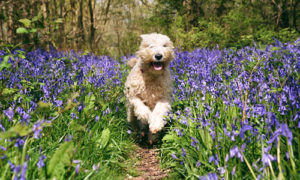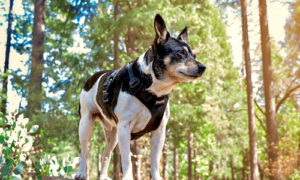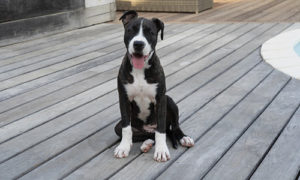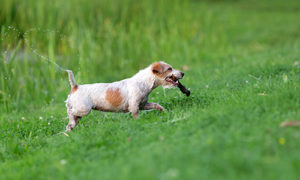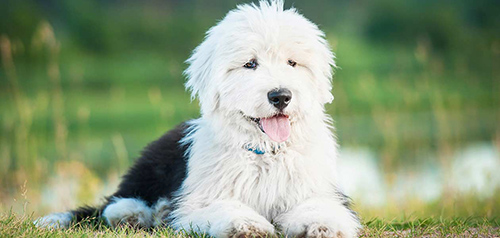
The Old English Sheepdog can trace its origin to the west of England, possibly from the Russian Owtcharka or Bearded Collie. At one time, wolves existed in England, and the breed presented an answer to the need for a strong dog capable of defending herds and flocks. However, by the mid 19th century, Old English Sheepdogs were primarily used to drive sheep and cattle to market. Because of their working dog’s status, they were exempt from taxes, and their tails were docked as proof of their occupation.
Today, the custom continues and has led to them being given the nickname of Bobtail. In the late 1800s, the breed was first exhibited, and one of the most popular show exhibits by the 1900s. The Old English Sheepdog eventually got its recognition by the AKC in 1905. The Earlier Old English Sheepdogs could be brown; however, later, they were restricted to shades of gray and white.
Though the Bobtail of today resembles the earlier dogs, it possesses a more abundant coat and compact body. The breed did not grow in recognition until the 1970s when it became a favorite media animal. The English Sheep Dog’s popularity exploded when more pet owners wanted a lovable and exotic mop dog. Unfortunately, its numbers have declined gradually since then, but the dogs remain a well-known breed. Today, Bobtails are more of a pet or show dog than working dogs.
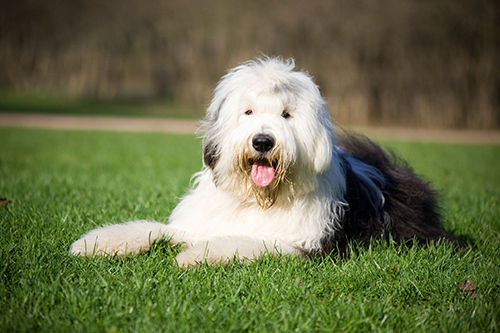
Breed Standard
The Old English Sheepdog is a compact, robust, balanced, and athletic dog covered with a profuse coat that provides insulation. Famous for its trademark shuffling gait, the dog has a short, compact body and a back that is lower at the shoulder than the hips. Its feet are round with tough, thick pads, and the tail is docked short. The dog’s head is large and squarely formed, with square, extended jaws, a large, black nose, and medium-sized ears carried close to the head. The eyes can be brown or blue, or one of each.
| Energy level | Watchdog ability | ||
| Exercise requirements | Protection ability | ||
| Playfulness | Grooming requirements | ||
| Affection level | Cold tolerance | ||
| Friendliness toward dogs | Heat tolerance | ||
| Friendliness toward other pets | Friendliness toward strangers | ||
| Ease of training |
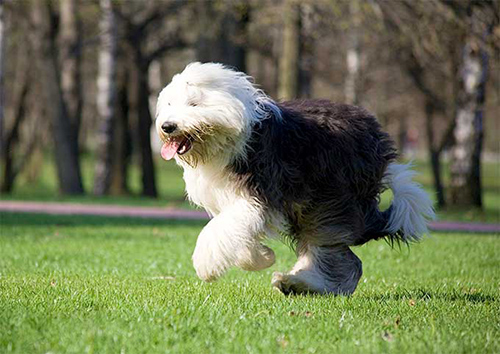
Breed Facts
- Popularity: somewhat popular
- Family Group: herding
- Country of Origin: England
- Date Developed: 1800s
- Original Purpose: sheep herding
- Current Function: herding trials
- Other Name: none
Activity Level: Moderate. The dogs are strong and energetic and should have three or four 30 minute exercise sessions a day. Some Old English Sheepdogs do enjoy swimming. However, the best exercise for them is herding.
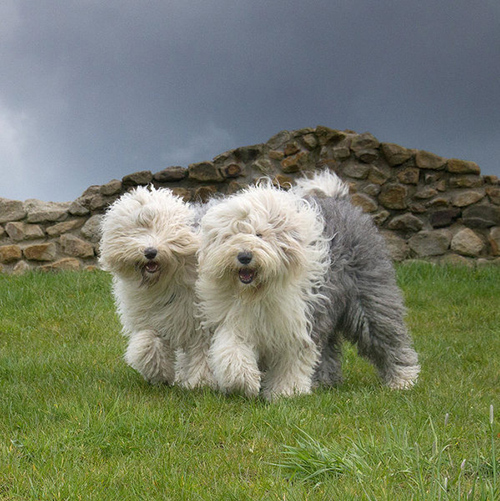
Grooming: 3 to 4 hours of grooming per week is necessary to keep the coat clean and mat-free. New owners should ask for a demonstration of properly brushing through the thick undercoat. The coat can be trimmed, but short coats also require brushing thoroughly, especially when shedding.
Coat: An abundant double coat with a hard-textured, shaggy outer coat and a water-resistant undercoat.
Color: Any shade of gray, grizzle, blue, or blue merle, with or without white markings. Puppies are born black and white and gradually lighten as they mature.
Group: Herding
AKC Recognition: 1888
Old English Sheepdog Temperament
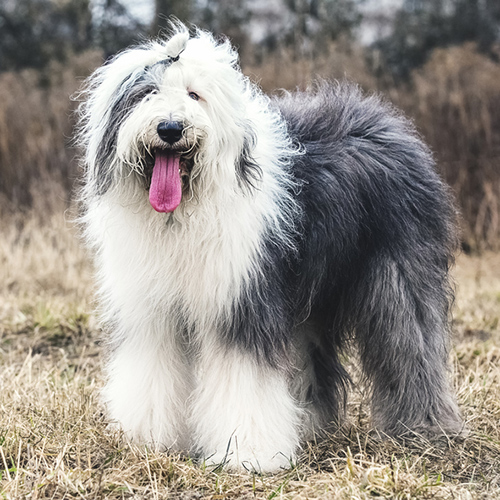
The breed is clownish, friendly, and playful. They can be boisterous, and discipline and training must commence at a young age. Old English Sheepdogs can be pretty demanding of attention, and they are noted for having a booming bark. The dogs are agile, adaptable, and intelligent, still possessing strong herding instincts that qualify them to work as shepherd or drover dogs.
The dogs are also jolly and gentle. They are well-mannered house pets who always amuses their family with comical tactics. It thrives on the company of humans and is very much a homebody. They’re highly protective and devoted to their families and tend to children as members of a flock. Although they’re friendly toward strangers, some can be a bit headstrong.
Health
- Main Problems: CHD
- Minor Issues: gastric torsion, otitis externa, retinal detachment, cataract, deafness, PRA, cerebellar ataxia, hypothyroidism
- Rarely Seen: none
- Recommended Tests: hip, eye, thyroid, (hearing)
- Life Span: 10 to 12 years
- Weight: male—70 to 90 pounds; female—60 to 80 pounds
- Height: make—22 inches and up; female—21 and up
Breeder and Buyer’s Advice
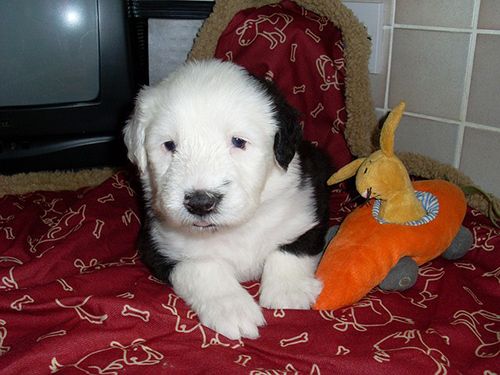
Potential owners need to have time for grooming challenges and be willing to care for a giant dog. Find Old English Sheepdog puppies for sale from reputable and trusted breeders. Confirm that the puppy’s parents have been screened for health concerns. You can also find breeders in your area by typing “Old English Sheepdogs puppies for sale near me” into search engines like Google. The puppy’s price depends on the breeder and the dog’s pedigree.
Parent Club: Old English Sheepdog Club of America; founded in 1905
Regional Clubs: Links to local clubs are given on the parent club’s website
Rescue: Information on the OESCA’s rescue chairperson and links to other rescue organizations are found on the parent club’s website

